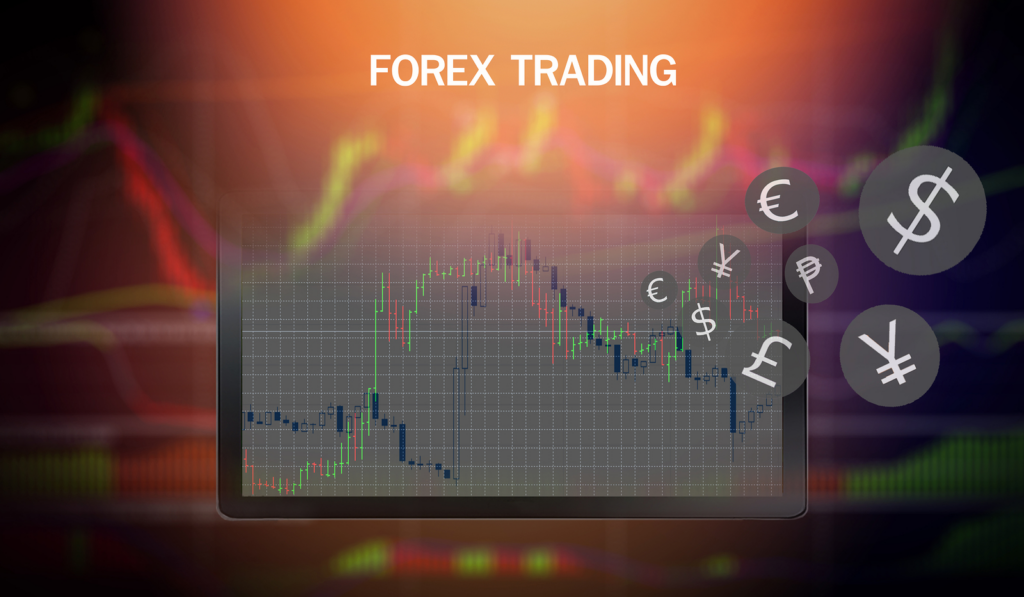Mastering the Forex Market: A Comprehensive Guide to Success in Forex Trading
Introduction to Forex Trading
As a seasoned trader, I have witnessed firsthand the incredible opportunities that the Forex market has to offer. With its immense liquidity, high volatility, and 24-hour trading, Forex has become one of the most popular and lucrative markets for individuals looking to capitalize on global currency movements. In this comprehensive guide, I will walk you through the essentials of Forex trading, from understanding the market dynamics to developing a winning strategy. Whether you are a beginner or an experienced trader, this guide will equip you with the knowledge and skills needed to master the Forex market.
Understanding the Forex Market
The Forex market, also known as the Foreign Exchange market, is where currencies are bought and sold. It is the largest financial market in the world, with a daily trading volume exceeding $6 trillion. Unlike the stock market, which operates through centralized exchanges, Forex trading takes place over-the-counter (OTC) through a global network of banks, financial institutions, and individual traders. The main participants in the Forex market are commercial banks, central banks, hedge funds, multinational corporations, and retail traders like you and me.
The Forex market operates 24 hours a day, five days a week, allowing traders to enter and exit positions at their convenience. This high level of accessibility is one of the key attractions of Forex trading. Additionally, the Forex market is known for its high liquidity, which means that there is a constant supply and demand for currencies. This liquidity ensures that traders can easily execute trades without significant slippage, even for large positions.

Benefits of Forex Trading
Forex trading offers a multitude of benefits that make it an attractive market for traders of all levels. Firstly, Forex trading provides the opportunity to profit from both rising and falling markets. Unlike traditional stock trading, where you can only profit if the value of a stock increases, Forex allows you to profit from currency pairs that are depreciating in value. This flexibility enables traders to capitalize on market trends and maximize their potential returns.
Another advantage of Forex trading is the high leverage available to traders. Leverage allows you to control a larger position with a smaller amount of capital. For example, with a leverage of 1:100, you can control a position worth $100,000 with just $1,000 in your trading account. While leverage can amplify your profits, it is important to note that it can also increase your losses. Proper risk management is crucial when trading with leverage to protect your capital.
Forex Trading Basics
Before diving into the world of Forex trading, it is essential to grasp the basic concepts and mechanics of the market. The first step is to understand how currency pairs are quoted. In Forex trading, currencies are always quoted in pairs, such as EUR/USD or GBP/JPY. The first currency in the pair is called the base currency, while the second currency is the quote currency. The exchange rate indicates how much of the quote currency is needed to buy one unit of the base currency.
To execute a trade in the Forex market, you need to choose a currency pair and decide whether you want to buy (go long) or sell (go short) the pair. If you believe that the base currency will appreciate against the quote currency, you would buy the pair. Conversely, if you expect the base currency to depreciate, you would sell the pair. Profits or losses in Forex trading are realized through the fluctuations in exchange rates.
Essential Forex Trading Terminologies
Like any specialized field, Forex trading comes with its own set of terminologies that may seem daunting to beginners. However, understanding these terms is crucial for navigating the Forex market effectively. Here are some essential Forex trading terminologies you need to know:
- Pip: A pip is the smallest unit of measurement in Forex trading. It represents the fourth decimal place in currency pairs. For example, if the EUR/USD exchange rate moves from 1.2000 to 1.2001, it has increased by one pip.
- Lot: A lot is the standardized unit size in Forex trading. There are three main types of lots: standard lot (100,000 units), mini lot (10,000 units), and micro lot (1,000 units). The lot size you choose will depend on your trading strategy and risk tolerance.
- Spread: The spread is the difference between the bid (selling) and ask (buying) price of a currency pair. It represents the transaction cost of trading and is typically measured in pips. Lower spreads are generally favorable for traders as they reduce the cost of executing trades.
- Margin: Margin is the collateral required by your broker to open and maintain a trading position. It is expressed as a percentage of the total trade size. Margin allows you to control larger positions with a smaller amount of capital, but it also exposes you to higher levels of risk.
How to Get Started in Forex Trading
Now that you have a good understanding of the Forex market and its basic terminologies, it’s time to take the next step and get started in Forex trading. Here are the key steps you need to follow:
- Educate Yourself: Forex trading is a skill that requires continuous learning and improvement. Start by familiarizing yourself with the fundamental concepts of Forex trading, such as technical analysis, fundamental analysis, and risk management. There are numerous online resources, courses, and books available that can help you deepen your knowledge.
- Choose a Reliable Broker: Selecting a reputable Forex broker is crucial for your trading journey. Look for a broker that is regulated by a recognized financial authority, offers competitive spreads, has a user-friendly trading platform, and provides reliable customer support. Take your time to compare different brokers and read reviews before making a decision.
- Open a Trading Account: Once you have chosen a broker, you will need to open a trading account. This process typically involves providing your personal information, completing a verification process, and depositing funds into your account. Most brokers offer different types of accounts to cater to traders with varying levels of experience and capital.
- Practice with a Demo Account: Before risking real money, it is highly recommended to practice trading with a demo account. A demo account allows you to trade with virtual funds in real market conditions. Use this opportunity to test different trading strategies, familiarize yourself with the trading platform, and gain confidence in your trading abilities.
- Develop a Trading Plan: A trading plan is a roadmap that outlines your trading goals, risk tolerance, trading strategy, and money management rules. It is essential to have a well-defined plan in place to guide your trading decisions and ensure consistency in your approach. Remember to adapt your plan as needed based on changing market conditions.
Developing a Forex Trading Strategy
A successful Forex trader relies on a well-defined trading strategy that aligns with their trading goals and risk tolerance. Here are the key components of a Forex trading strategy:
- Timeframe: Determine the timeframe that suits your trading style and preferences. Common timeframes in Forex trading include daily, weekly, and monthly charts. Shorter timeframes, such as hourly or even minute charts, are often used by day traders and scalpers.
- Technical Indicators: Utilize technical indicators to identify potential entry and exit points. Popular indicators include moving averages, oscillators, and trend lines. Experiment with different indicators and find the ones that work best for your trading style.
- Risk Management: Implement proper risk management techniques to protect your capital. This includes setting stop-loss orders to limit potential losses, using proper position sizing techniques, and avoiding over-leveraging your trades.
- Trade Execution: Determine the criteria for entering and exiting trades. This can be based on technical indicators, chart patterns, or fundamental analysis. Define clear rules for trade entry, exit, and take profit levels.
- Backtesting and Optimization: Test your trading strategy on historical data to assess its performance. This process, known as backtesting, helps you identify strengths and weaknesses in your strategy. Make necessary adjustments and optimizations based on the results.
Remember, a trading strategy is not set in stone and should be continuously refined and adapted based on market conditions and personal experience.
Risk Management in Forex Trading
Risk management is a crucial aspect of Forex trading that can make or break your success in the market. Here are some key risk management principles to consider:
- Use Stop-Loss Orders: A stop-loss order is an instruction to automatically close a trade at a predetermined price level. It helps limit potential losses and protects your trading capital. Always set a stop-loss order for every trade to ensure you have an exit strategy in place.
- Diversify Your Trades: Avoid putting all your eggs in one basket by diversifying your trades. Instead of focusing on a single currency pair, consider trading multiple pairs with different correlations. This can help reduce the impact of adverse market movements on your overall portfolio.
- Manage Your Leverage: While leverage can amplify your profits, it can also magnify your losses. Use leverage wisely and avoid overexposing yourself to unnecessary risks. Consider your risk tolerance and trading strategy when determining the appropriate leverage level for your trades.
- Monitor Market News: Stay informed about economic and geopolitical events that can impact the Forex market. Sudden news releases can cause significant price fluctuations and increase market volatility. Be prepared to adjust your trading positions or stay on the sidelines during periods of high uncertainty.
- Never Risk More Than You Can Afford to Lose: This is perhaps the most important rule of risk management. Only trade with funds that you can afford to lose without affecting your financial well-being. Avoid chasing losses or taking excessive risks in an attempt to recover previous losses.
By implementing these risk management practices, you can protect your capital and increase your chances of long-term success in Forex trading.
Technical Analysis in Forex Trading
Technical analysis is a popular approach used by Forex traders to predict future price movements based on historical data. It involves analyzing charts, patterns, and indicators to identify trends, support and resistance levels, and potential trade opportunities. Here are some key technical analysis tools and concepts:
- Candlestick Charts: Candlestick charts are a visual representation of price movements. Each candlestick represents a specific time period (e.g., one hour, one day) and displays the opening, closing, high, and low prices for that period. Patterns formed by candlesticks can provide valuable insights into market sentiment and potential reversals.
- Trend Lines: Trend lines are lines drawn on a chart to connect the highs or lows of a trend. They help identify the direction of the market and potential areas of support and resistance. An uptrend is characterized by higher highs and higher lows, while a downtrend consists of lower highs and lower lows.
- Moving Averages: Moving averages are calculated by averaging the closing prices of a currency pair over a specific period. They help smooth out price fluctuations and identify the overall trend. Common moving averages include the simple moving average (SMA) and the exponential moving average (EMA).
- Support and Resistance: Support and resistance levels are price levels where the market has historically shown a tendency to reverse or stall. Support levels act as a floor, preventing prices from falling further, while resistance levels act as a ceiling, preventing prices from rising higher. Identifying these levels can help determine entry and exit points for trades.
- Indicators: Technical indicators are mathematical calculations applied to price and volume data to generate trading signals. Popular indicators include the Relative Strength Index (RSI), Moving Average Convergence Divergence (MACD), and Bollinger Bands. It is important to understand the strengths and limitations of each indicator and use them in conjunction with other technical analysis tools.
Remember, technical analysis is not foolproof and should be used in combination with other forms of analysis, such as fundamental analysis and market sentiment, to make well-informed trading decisions.

Fundamental Analysis in Forex Trading
While technical analysis focuses on historical price data, fundamental analysis looks at economic and political factors that can influence currency values. Fundamental analysis takes into account a wide range of variables, including interest rates, GDP growth, inflation, geopolitical events, and monetary policies. Here are some key concepts and indicators used in fundamental analysis:
- Economic Indicators: Economic indicators provide insights into the health of an economy and can impact currency values. Key economic indicators to watch include Gross Domestic Product (GDP), inflation rates, employment data, consumer sentiment, and central bank announcements.
- Interest Rates: Interest rates play a vital role in Forex trading as they affect the relative value of currencies. Higher interest rates tend to attract foreign investment and can lead to currency appreciation, while lower interest rates can have the opposite effect.
- Central Bank Policies: Central banks play a crucial role in managing monetary policy and can impact currency values through interest rate decisions, quantitative easing programs, and intervention in the foreign exchange market. Pay attention to central bank statements and speeches for insights into future policy actions.
- Geopolitical Events: Political instability, trade disputes, and geopolitical tensions can have a significant impact on currency values. Stay informed about major geopolitical events that can influence the Forex market, such as elections, trade negotiations, and geopolitical conflicts.
- Market Sentiment: Market sentiment refers to the overall attitude of traders and investors towards a particular currency or market. Positive sentiment can lead to increased buying pressure and currency appreciation, while negative sentiment can result in selling pressure and currency depreciation. Pay attention to news, social media, and market sentiment indicators to gauge market sentiment.
Fundamental analysis requires a deep understanding of economic factors and their impact on currency values. It is important to combine fundamental analysis with technical analysis to make well-rounded trading decisions.
Best Practices for Successful Forex Trading
To maximize your chances of success in Forex trading, it is important to follow some best practices and principles. Here are some tips to help you on your trading journey:
- Continuous Learning: Forex trading is a dynamic field that requires continuous learning and adaptation. Stay updated with market news, economic events, and new trading strategies. Attend webinars, read books, and follow reputable trading blogs to expand your knowledge.
- Keep a Trading Journal: Maintaining a trading journal is an invaluable tool for self-reflection and improvement. Record your trades, including the rationale behind each trade, entry and exit points, and the outcome. Review your journal regularly to identify patterns and areas for improvement.




